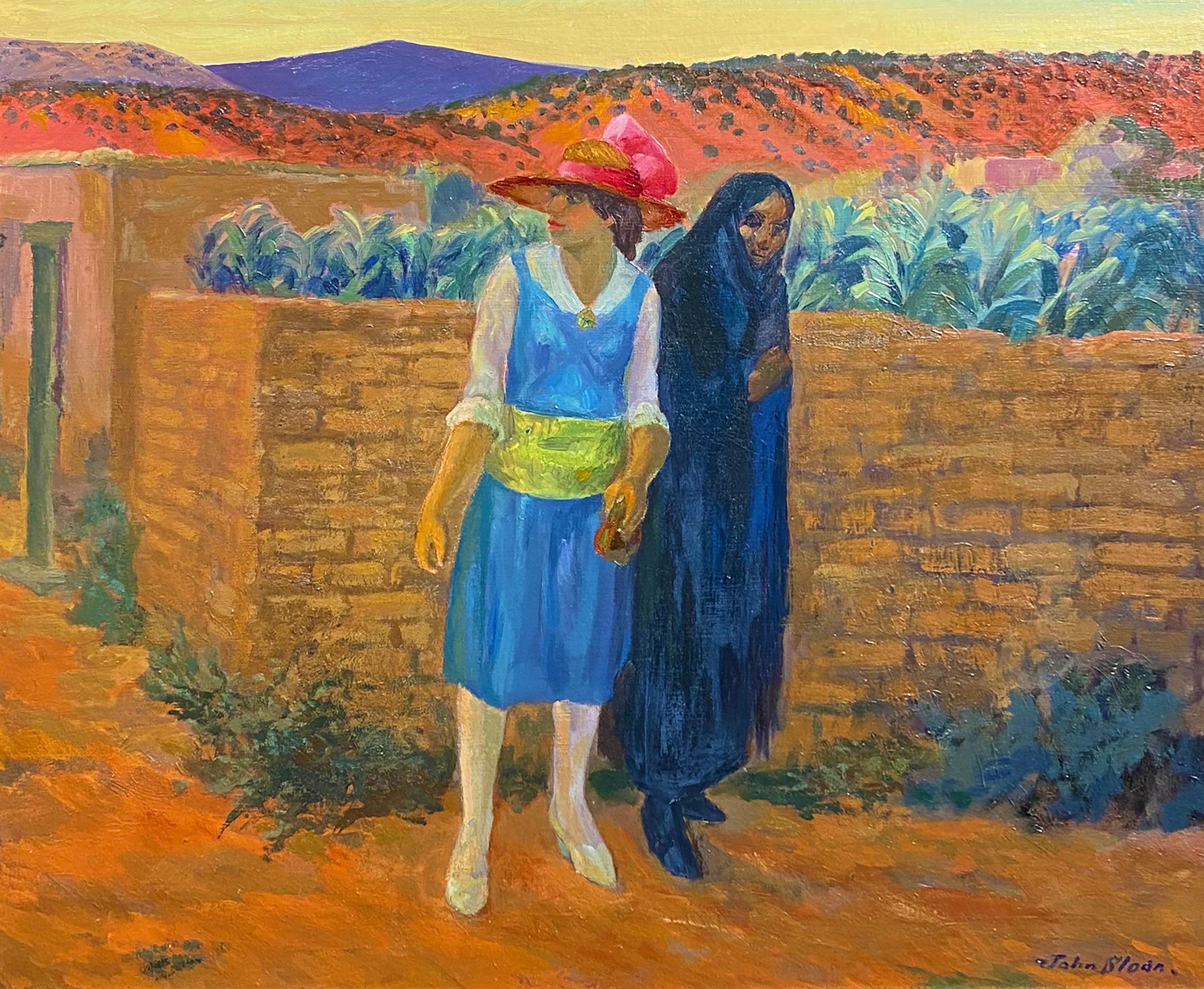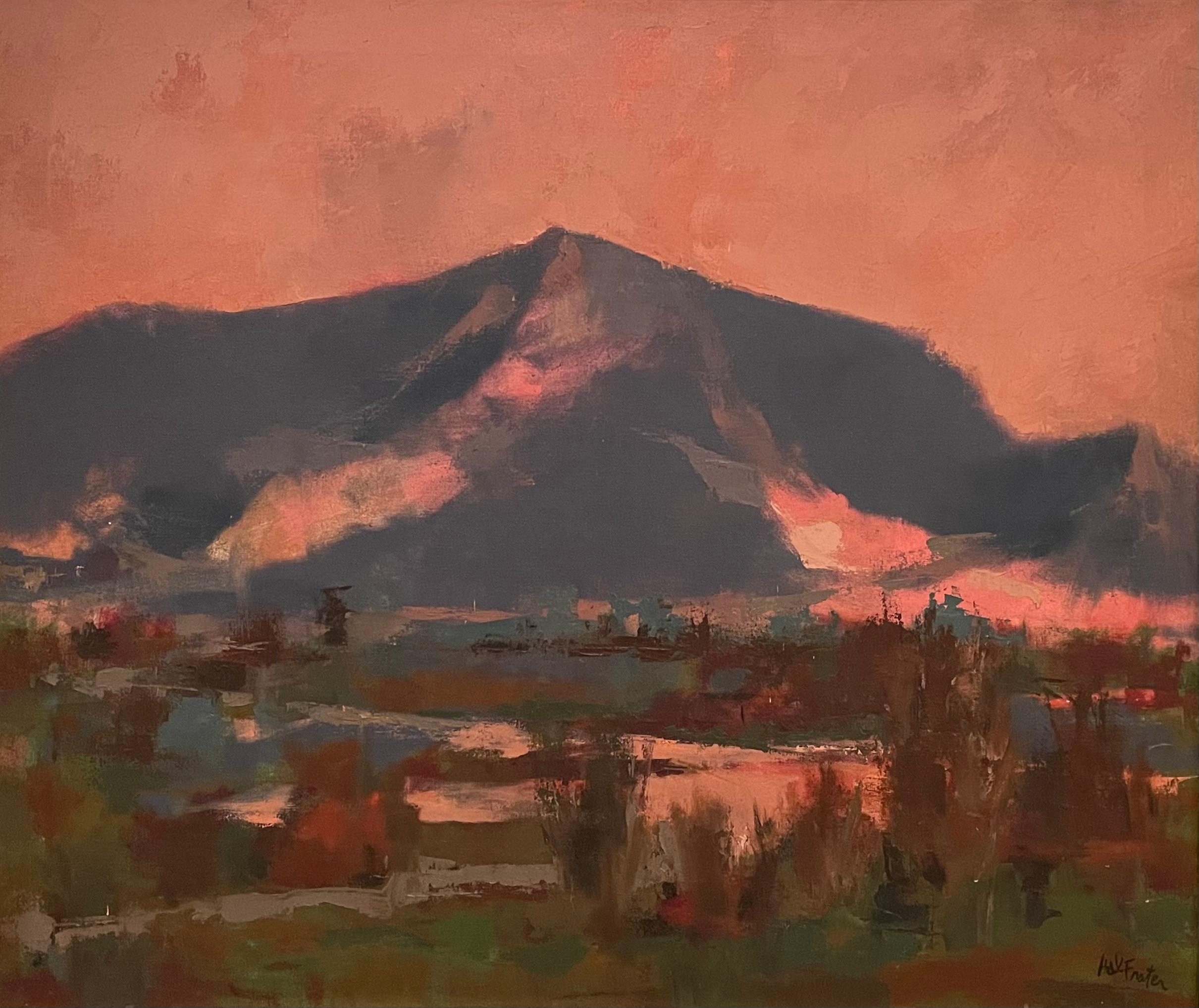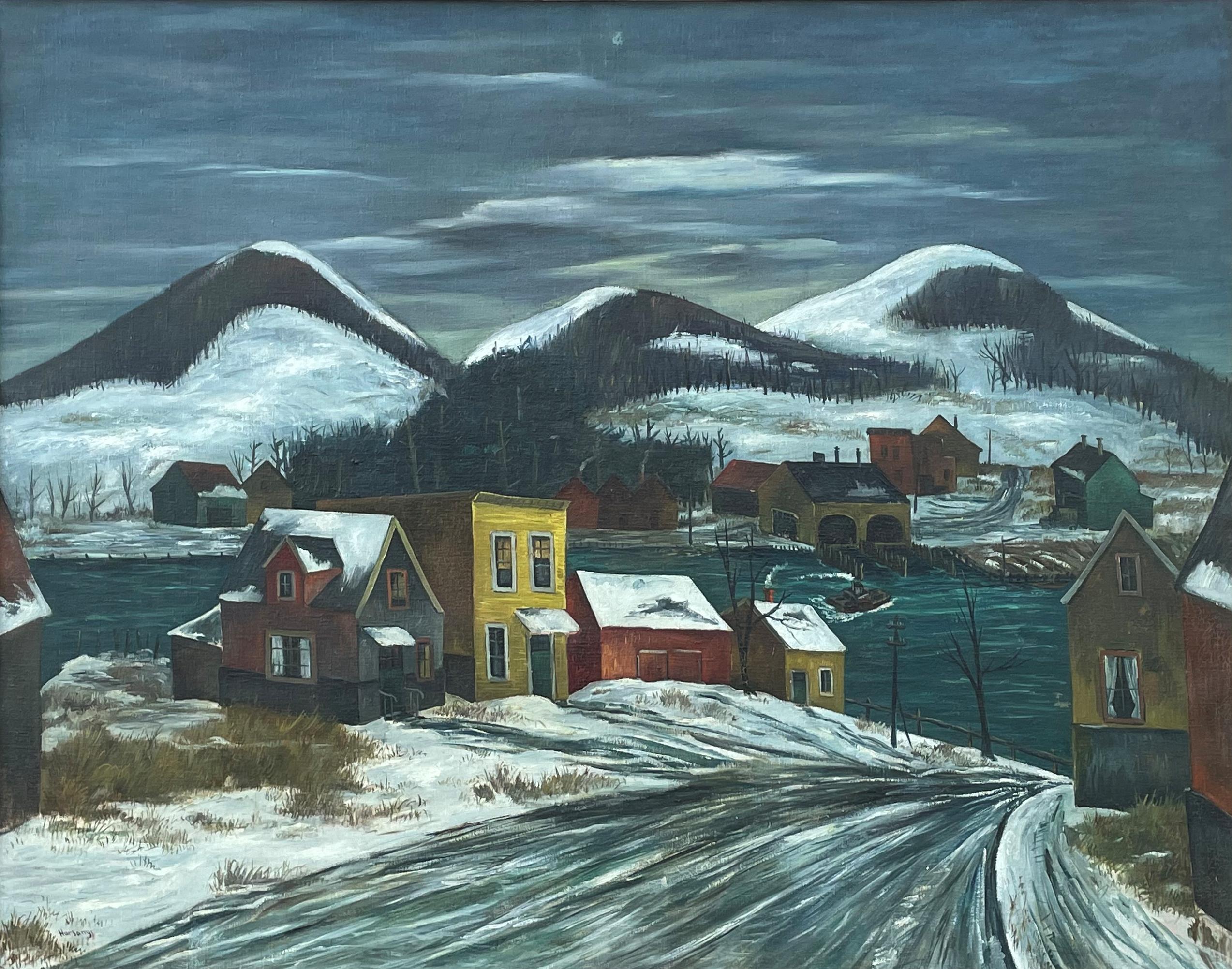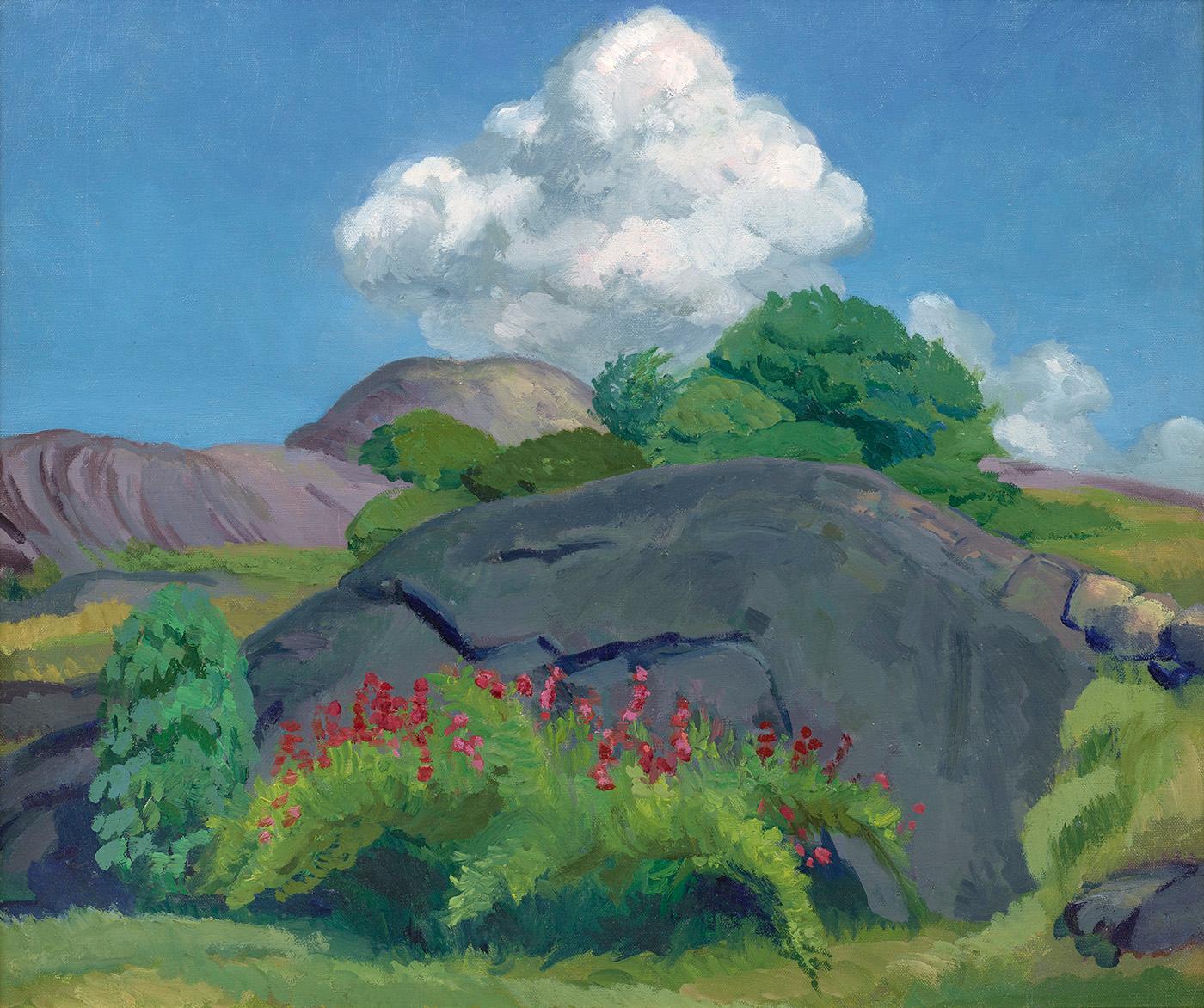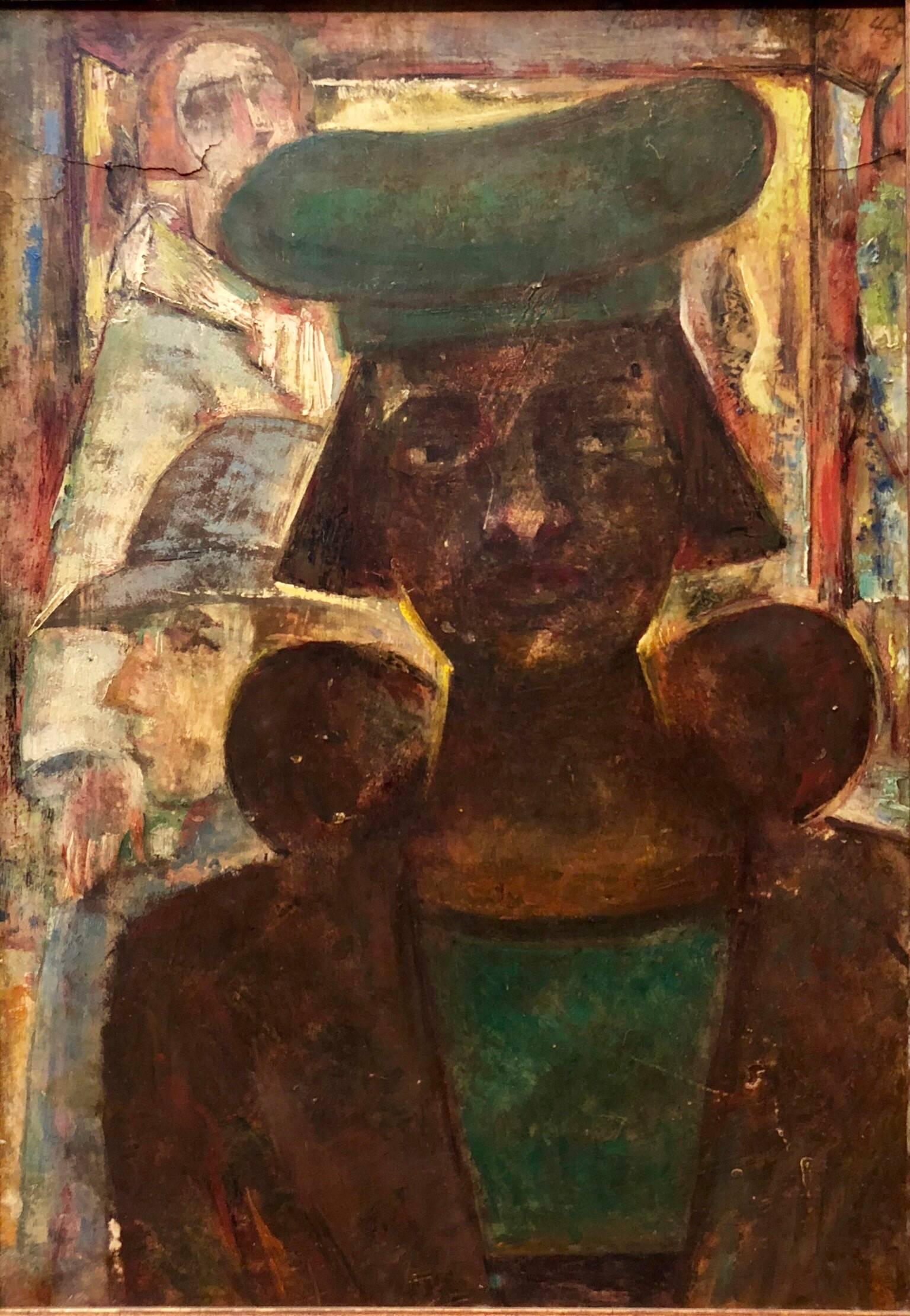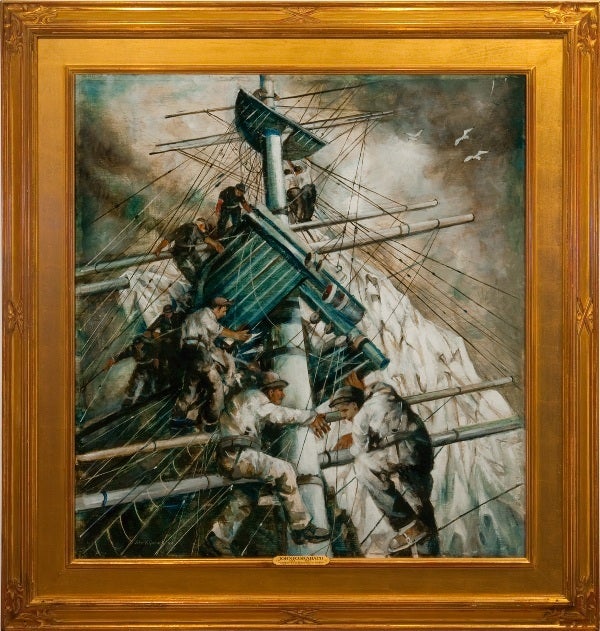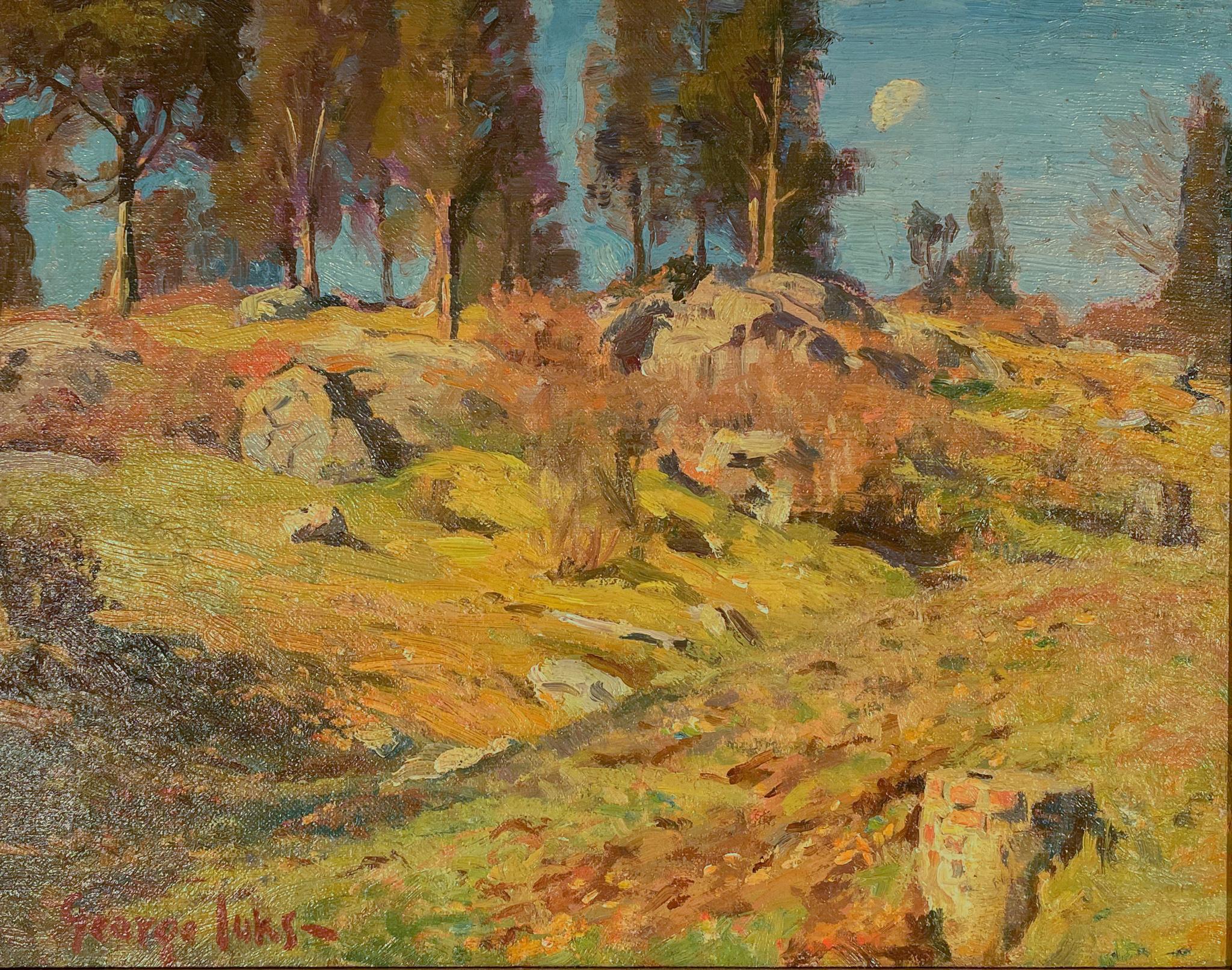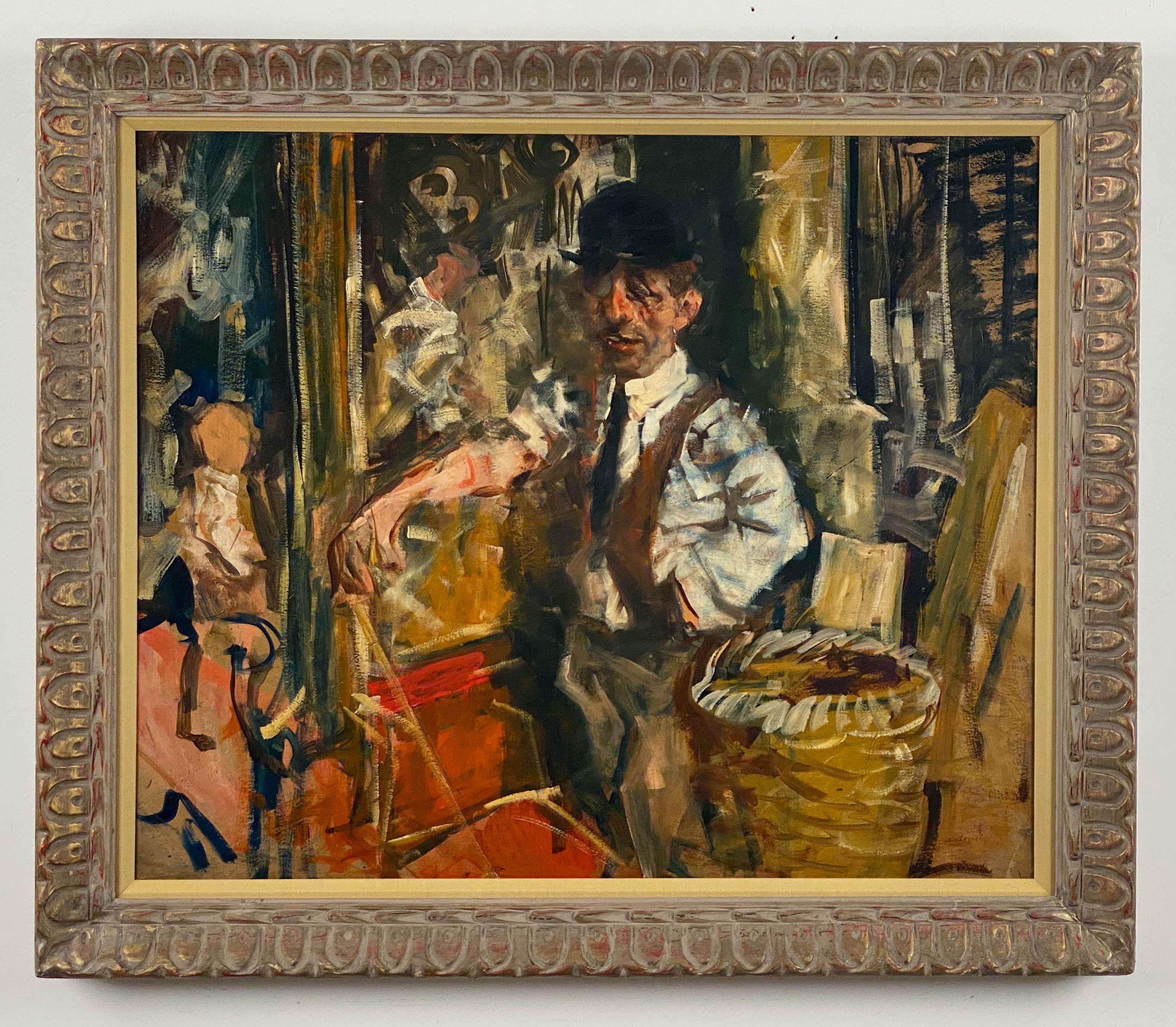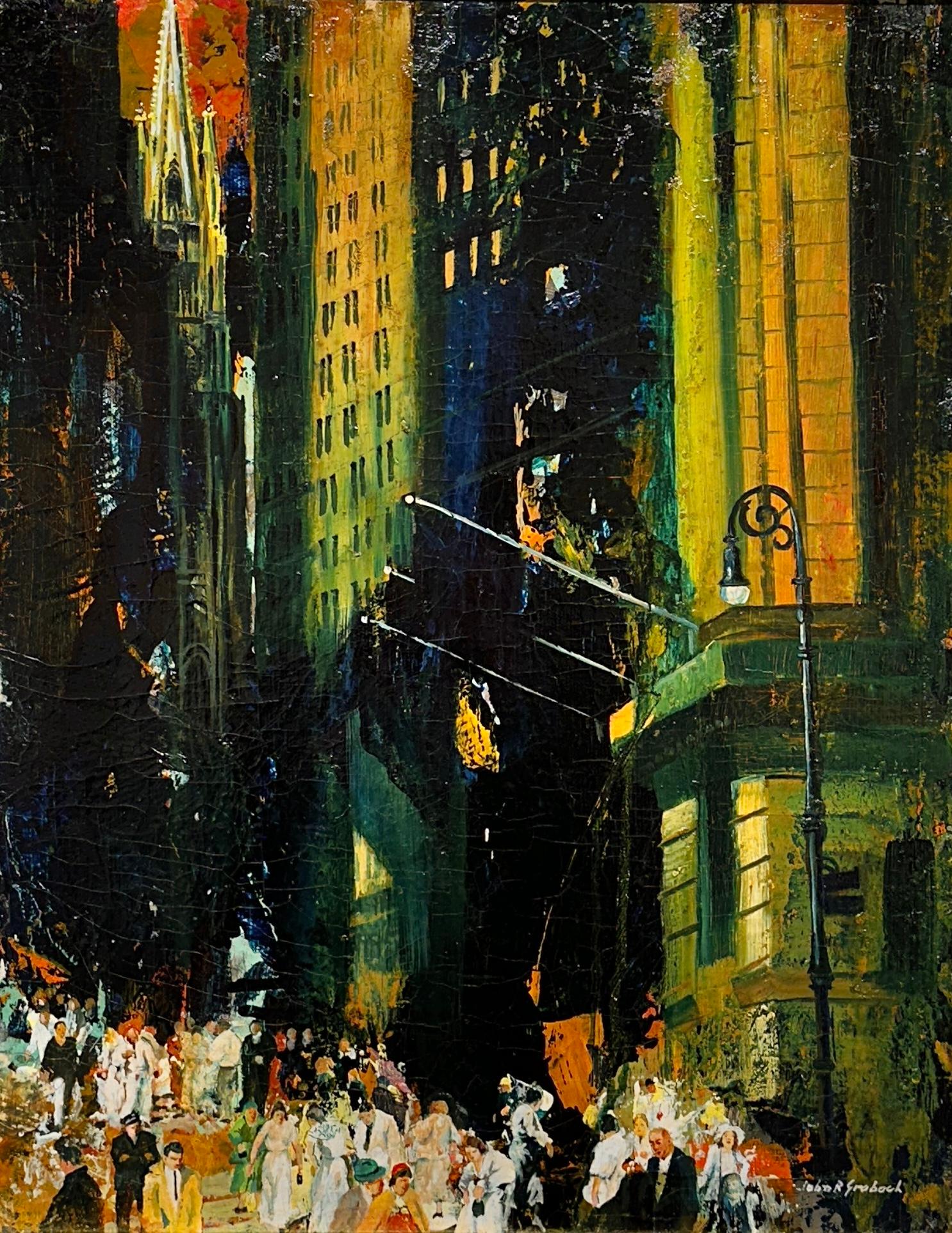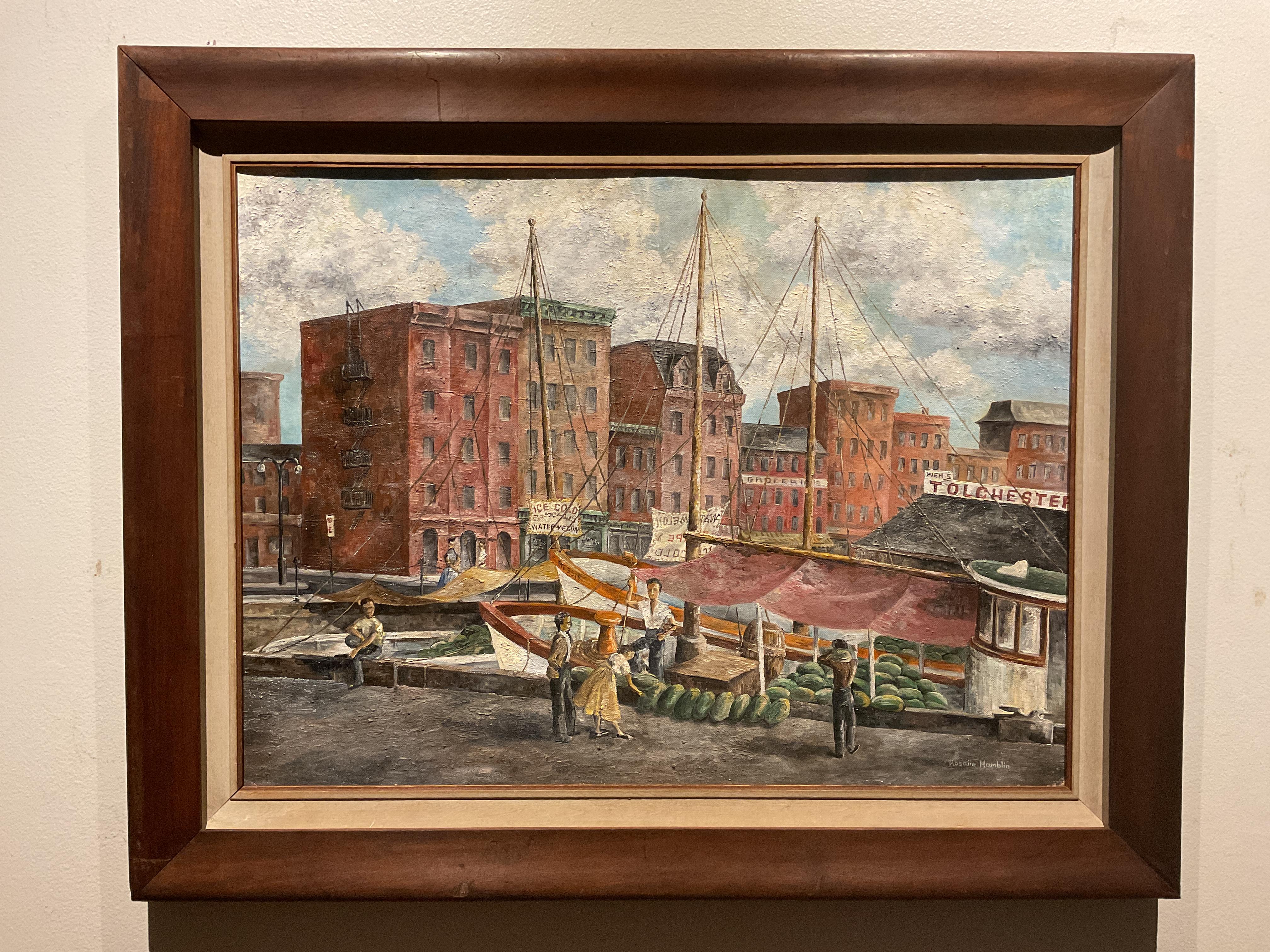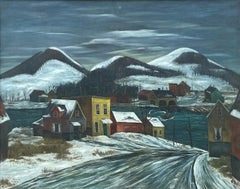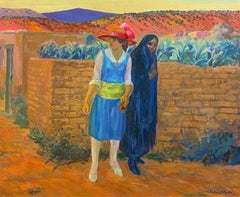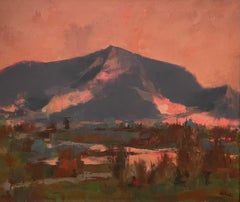"St. Moritz, A Sunny Corner" Eugene Vail, Winter Bobsled Figures in Snow, Ashcan
Want more images or videos?
Request additional images or videos from the seller
1 of 12
Eugène Lawrence Vail"St. Moritz, A Sunny Corner" Eugene Vail, Winter Bobsled Figures in Snow, Ashcancirca 1925
circa 1925
About the Item
- Creator:Eugène Lawrence Vail (1857 - 1934, American)
- Creation Year:circa 1925
- Dimensions:Height: 29 in (73.66 cm)Width: 33 in (83.82 cm)
- Medium:
- Movement & Style:
- Period:
- Condition:
- Gallery Location:New York, NY
- Reference Number:1stDibs: LU1841210510762
About the Seller
5.0
Platinum Seller
These expertly vetted sellers are 1stDibs' most experienced sellers and are rated highest by our customers.
Established in 2021
1stDibs seller since 2022
59 sales on 1stDibs
More From This SellerView All
- "Portland Harbor, Maine, " Alexander Bower, Snowy River Scene in WinterBy Alexander BowerLocated in New York, NYAlexander Bower (1875 - 1952) Portland Harbor, Maine, 1910 Oil on canvas 27 x 33 inches Signed and dated lower right An American Impressionist, Alexande Bower was born in New York, studied at The Pennsylvania Academy of Fine Art, and was living with his wife in Cliff Island, Maine by 1914. Despite his urban upbringing, the coast and the sea fascinated Bower. A large portion of his paintings are seascapes, particularly scenes depicting the coast of Cape Elizabeth...Category
1910s Ashcan School Landscape Paintings
MaterialsCanvas, Oil
$36,000 Sale Price20% Off - "The Ferry No. 2, " Charles Harsanyi, Modern, Large WPA Ashcan Landscape SceneBy Charles E. HarsanyiLocated in New York, NYCharles E. Harsanyi (1905 - 1973) The Ferry No. 2, 1946 Oil on canvas 40 x 52 inches Signed, titled and dated on the reverse Provenance: The artist Grand Central Art Galleries, New York Private Collection, New York Kappell Gallery, Greenport, New York Private Collection, Long Island, circa 2002 Exhibited: New York, Grand Central Art Galleries, Critics' Show, December 10 - 21, 1946. Charles E. Harsanyi was born in Tapolcza, Hungary in 1905. He studied at the Royal Academy in Budapest, Hungary with A. Bankhard from 1923 to 1928. Nineteen years later, in 1947, Harsanyi moved to the U. S., settling in Jackson Heights, New York. The painter and drawing specialist became a member of numerous prestigious art clubs including the Salmagundi Club, The Society of Independent Artists and the Allied Artists of America. Harsanyi served as an awards director and chairman of admissions for the Audubon Artists Association during the 1950s. Later in life after living in Stephentown, New York and Cape Coral...Category
1940s Ashcan School Landscape Paintings
MaterialsCanvas, Oil
- Revolutionary Guard House for General Putnam's Army, West Redding, ConnecticutBy Leon KrollLocated in New York, NYLeon Kroll Revolutionary Guard House for General Putnam's Army, West Redding, Connecticut, 1911 Signed and dated lower right Oil on panel 8 1/2 x 10 3/4 inches Provenance: Private C...Category
1910s Ashcan School Landscape Paintings
MaterialsPanel, Oil
- "Mount Rockwell, Glacier National Park, Montana, " Mountain Lake Landscape ViewBy Charles Warren EatonLocated in New York, NYCharles Warren Eaton (1857 – 1937) The Shadow of Mount Rockwell, Glacier National Park, Montana, 1921 Oil on canvas 20 x 24 inches Signed lower right: CHAS WARREN EATON. Provenance: The artist The Macbeth Gallery, New York Private Collection Sotheby's New York, American Art, April 14, 1989 ConocoPhillips, Houston Simpson Galleries, Houston, Fine Art & Antiques, May 18, 2019, Lot 447 Exhibited: New York, The Macbeth Gallery, Paintings of Glacier National Park by Charles Warren Eaton, December 13, 1921 - January 2, 1922, no. 2. Literature: "Two Exhibitions at Macbeth's," American Art News, New York, Vol. XX, No. 10, December 17, 1921. A contemporary critic wrote that the paintings of Charles Warren Eaton appeal to “the dreamers who find in them the undiscovered scenes in which their fancy long has dwelt.” Eaton’s contemplative landscapes exude a spiritual quality that moves the observer into a similar frame of mind. He loved to depict the ethereal light of dawn and dusk in late autumn or winter, usually without any reference to human or animal figures or buildings. These Tonalist paintings, with their subdued palette and relatively intimate scale, marked a definite break with the fading popularity of the panoramic and romantic views of the Hudson River School painters. Charles Warren Eaton was born in Albany, New York to a family of limited means. He began painting while working in a dry-goods store. At age 22, he enrolled at the National Academy of Design in New York City and then studied figure painting at the Art Students League. By 1886, he was successful enough to quit his day job and make a living as a landscape painter. That year, he traveled to Europe with fellow Tonalist painters Leonard Ochtman and Ben Foster. In France, Eaton visited popular artist’s spots such as Paris, Fontainebleau and Grez-sur-Loing, and fell in love with the loose brushwork and moody style of French Barbizon painting. Returning to the United States, Eaton fell under the spell of George Inness, the foremost exponent of Barbizon style in the United States. In 1888, Eaton settled near Inness in Bloomfield, New Jersey, where Eaton lived until his death in 1937. In this period, he painted shadowy and ambiguous landscapes inspired by rural scenery in the northeastern United States. His signature theme was a cropped view of the branches, trunks, and foliage of a pine grove silhouetted against a delicately illuminated sunset or moonlit sky. He painted this vision so often between 1900 and 1910 that he picked up the sobriquet ‘‘The Pine Tree Painter.” After 1910, Eaton responded to the popularity of Impressionism by using brighter colors and painting sunlit daytime scenes. In 1921, he was hired to paint Glacier Lake, in Glacier National Park by the Great Northern Railroad Company as part of their ‘See America First’ campaign. He produced more than 20 paintings, among the artist's last works, that now poignantly remind viewers of the vast disappearing glaciers. Eaton tended to approach this mountain scenery from an oblique vantage point; he liked to capture small episodes, showing mountaintops nearly obscured by dramatically attenuated screens of fir trees. Eaton, like many Tonalist artists of his generation such as Henry Ward Ranger, John Francis Murphy, and Charles Melville Dewey...Category
1920s Tonalist Landscape Paintings
MaterialsCanvas, Paint, Oil
- "Stone Wall, Autumn, " George Smillie, Tonalist Fall Landscape ViewBy George Henry SmillieLocated in New York, NYGeorge Henry Smillie (1840 - 1921) Stone Wall, Autumn, 1879 Oil on canvas 9 1/2 x 15 inches Signed and dated lower right Provenance: Skinner, Boston, September 19, 2014, Lot 389 The career of George Smillie (1840-1921) followed the arc of nineteenth-century U.S. landscape painting. Trained in the Hudson River School tradition, Smillie successfully adapted to changing U.S. tastes and growing interest in European trends. In the late 1800s, he moved to tonalist paintings full of brushwork and influenced by French Barbizon painting. By the end of his career, he had lightened his palette to produce works similar to those of the U.S. impressionists. Yet in all styles, he was never less than competent, and his tonalist work is among the best produced in the United States. Like many nineteenth-century painters, George Smillie’s artistic training began with the study of printing. His father, James Smillie...Category
1870s Tonalist Landscape Paintings
MaterialsOil, Canvas
- "Along the Kanahawa River, West Virginia, " Ernest Fiene, WPA Coal SteamboatBy Ernest FieneLocated in New York, NYErnest Fiene Along the Kanahawa River, West Virginia, 1936 Signed lower right Oil on canvas 26 x 36 inches Fiene made a series of paintings, drawings and lithographs which are based on his travels through Pennsylvania and West Virginia during the winter of 1935-36. The industrial areas of Pennsylvania and West Virginia are represented in numerous oils, among which are some of his most well-known. Fiene wrote of the trip, "The increasing snow and atmospheric conditions [in the Kanawha River valley} enhanced this mountainous coal mining country with a majestic beauty." Winter on the River is Fiene's only American Artists Group print and there were only two lithographs produced from the West Virginia trip. The American Artists Group (AAG), under the direction of Carl Zigrosser, who was then working at New York's famed Weyhe Gallery, published ninety-three prints by over fifty artists in 1936 and 1937. Zigrosser's goal was to popularize contemporary American art through original prints offered at the low price of $2.75. The project was also a means to provide income for impoverished artists during the Depression. The prints were featured in many of the leading print exhibitions and publications of the period. The lithograph produced from this image is now in the collection of the Amon Carter Museum, Baltimore Museum of Art, Cleveland Museum of Art, Philadelphia Museum of Art, Pensacola Museum of Art, San Francisco Fine Arts Museum, Syracuse Museum, Yale University Art Museum. Ernest Fiene was born in Elberfeld, Germany in 1894. As a teenager, Fiene immigrated to the United States in 1912. He studied art at the National Academy of Design in New York City from 1914 to 1918, taking day classes with Thomas Maynard and evening classes with Leon Kroll. Fiene continued his studies at the Beaux-Arts Institute of Design in New York from 1916 to 1918, adding classes in printmaking at the Art Students League in 1923. Fiene began his career as an artist in 1919 with his first exhibition of watercolors at the MacDowell Club arranged by his mentor Robert Henri. In 1923 the Whitney Studio Club mounted a large exhibition of his works. The following year he had an exhibition at the New Gallery in New York, which completely sold out all fifty-two works, including paintings, watercolors, drawings, and etchings. With the proceeds of sales from the New Gallery exhibition, Ernest Fiene and his younger brother Paul, a sculptor, built studios in Woodstock, New York in 1925. In the early Twenties Ernest Fiene painted mostly landscapes of Woodstock and both the Ramapo and Hudson River Valleys. The first monograph from the Younger Artists Series was published on Fiene in 1922. Published in Woodstock, the series went on to include Alexander Brook, Peggy Bacon, and Yasuo Kuniyoshi. The book reproduced 1 illustration in color and another 27 reproductions in black and white. Around 1925 Fiene became fascinated with the intensity, excitement, and opportunities for color harmonies New York City offered as a subject. His paintings shifted to urban and industrial themes with architecture, industry, and transportation becoming his subjects. By 1926 Fiene had attracted the dealer Frank K.M. Rehn, who gave him a one-man exhibition that year, which travelled to the Boston Arts Club. C.W. Kraushaar Galleries gave Fiene a one-man exhibition of urban, landscape, portrait, and still life paintings in 1927. Julianna Force, the director of the Whitney Studio Club and first director of the Whitney Museum of American Art, included two of Fiene’s paintings in a fall exhibition in 1928. The Whitney Studio Club showed Fiene’s paintings in a two-man exhibition with Glenn O. Coleman that year and acquired three of Fiene’s paintings. Also in 1928 Fiene became affiliated with Edith Halpert’s Downtown Gallery where he had an exhibition of 20 lithographs in the spring. Fiene sold his house in Woodstock in 1928 to spend more of his time in New York City. With so many successful exhibitions, Fiene returned to Paris in 1928-29 where he rented Jules Pascin's studio and studied at the Académie de la Grande Chaumière. In France, Fiene painted both landscape and urban subjects developed from ideas influenced by Cubist geometry and the use of flat areas of broad color. Upon returning to New York in 1930, Fiene used this new approach to continue to paint New York skyscraper and waterfront subjects, as well as to begin a series of paintings on changing old New York based on the excavations for Radio City Music Hall and the construction of the Empire State Building. Frank K.M. Rehn Galleries exhibited this series, titled “Changing Old New York,” in 1931. Fiene also has solo exhibitions at Rehn Galleries in 1930 and 1932. Fiene’s oil paintings are exhibited at the Chicago Arts Club in 1930 as well. Fiene was included in the Museum of Modern Art’s exhibition Painting and Sculpture by Living Americans in December of 1931. Visiting New York, Henri Matisse saw the exhibition and called Fiene’s Razing Buildings, West 49th Street the finest painting he had seen in New York. Fiene had two mural studies from his Mechanical Progress series exhibited at the Museum of Modern Art’s exhibition Murals by American Painters and Photographers in 1932. Fiene sent View from my Window which depicts Fiene working on a lithograph stone while looking out his window to the newly completed Empire State Building to the Carnegie International in 1931. In 1932 Fiene participated in the first Biennial of American Painting at the Whitney Museum and his prints were included in exhibitions at the Downtown Gallery and the Wehye Gallery. In the same year, Fiene was awarded a Guggenheim fellowship to further study mural painting in Florence, Italy. On his return from Italy in 1933 Fiene re-engaged himself in New York City life and won several public and private mural projects. Fiene resumed his active exhibition schedule, participating in two group exhibitions at the Whitney Museum and a one-man exhibition of recent paintings at the Downtown Gallery in January 1934. In 1933 he purchased a farm in Southbury, Connecticut, which added Connecticut scenes to his landscape subjects. This was also the year Fiene began to spend summers on Monhegan Island, Maine, where he painted seascapes, harbor scenes, and still lifes. Fiene’s landscape paintings attracted numerous commissions as part of the American Scene movement. Through the fall and winter of 1935-36, Fiene took an extended sketching trip through the urban, industrial, and farming areas of Pennsylvania and West Virginia. Most of the twenty-four Pennsylvania urban and rural paintings from this trip were featured in an exhibition held at the First National Bank in Pittsburgh in October of 1937 by the Pittsburgh Commission for Industrial Expansion. Fiene said of these works that he formed rhythm, opportunity for space and color, and integrity in the Pennsylvania mill and furnace paintings. Fiene received the silver medal for one of the Pittsburgh paintings...Category
1930s American Realist Landscape Paintings
MaterialsCanvas, Oil
You May Also Like
- Mother and Daughter, Santa Fe, 1919-20By John French SloanLocated in Missouri, MOMother and Daughter, Santa Fe, 1919-20 By. John French Sloan (American, 1871-1951) Signed Lower Right Unframed: 20 x 24 inches Framed: 27 x 31.5 inches Born in Lock Haven, Pennsylva...Category
Early 20th Century Ashcan School Figurative Paintings
MaterialsCanvas, Oil
Price Upon Request - Under the HollowBy Alexander Oscar LevyLocated in Buffalo, NYAn important American modern landscape by Ashcan school artist Alexander O. Levy. This painting was featured in the retrospective for the artist held at the Burchfield Penney Art Ce...Category
1930s Ashcan School Landscape Paintings
MaterialsCanvas, Oil
- 'Pink Sky' by Hal Frater - Mountain Range at Dusk - Oil Painting on CanvasBy Hal FraterLocated in Carmel, CAHal Frater's "Pink Sky" is a moody landscape that masterfully captures the play of light at dusk. Dominated by a majestic mountain under a vast, dusky sky, the painting is steeped in...Category
1970s Ashcan School Landscape Paintings
MaterialsCanvas, Oil
$8,000 Sale Price20% OffFree Shipping - White Cloud and RockBy John SloanLocated in New York, NYKnown as the “dean of American artists,” John Sloan was one of the most influential members of the Ashcan school.Category
1910s Ashcan School Landscape Paintings
MaterialsOil
- Modernist Oil Painting the Shop Window NYC 1940s WPA eraBy Maurice BeckerLocated in Surfside, FLthe Shop Window New York City, 1940s 17.75X25 sight size. Maurice Becker (1889–1975) was a radical political artist best known for his work in the 1910s and 1920s for such publica...Category
Early 20th Century Ashcan School Landscape Paintings
MaterialsOil, Board
- "After the Storm"By John R. GrabachLocated in Lambertville, NJSigned LL John Grabach was a highly regarded New Jersey artist, teacher and author of a classic text, How to Draw the Human Figure. He was born in Massachusetts, and with his widow...Category
20th Century Ashcan School Figurative Paintings
MaterialsOil, Panel
Recently Viewed
View AllMore Ways To Browse
Corner Gold
Pennsylvania School
Corner Group
Northern School
Winter In Paris
Swiss Corner
French Eugene
Paris Exposition 1925
Paris Painting Winter
Painted Standing Figures
Winter Village
Snow Paris
Lost At Sea
Snow Mountain Landscape
Winter Pictures
Snow Landscape With Mountains
American School Marine
Ashcan New York
